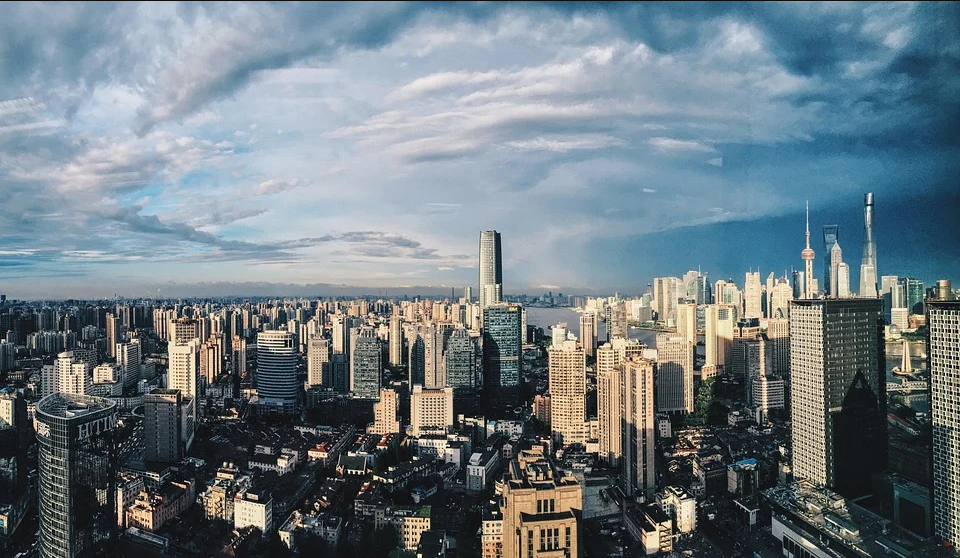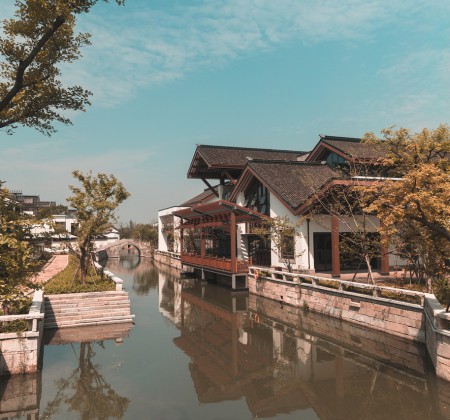Does Shanghai Get Snow?
It always snows in winter in Shanghai. It snows almost every year, mainly light snow. Shanghai has a maritime climate on the mainland. Although the temperature in winter is not low, it still snows in Shanghai in winter. It snows almost every year, and there are not many times of snow in a year, almost once or twice.
The time of snow in Shanghai is basically between the end of December and February, and there will be snow before and after the Spring Festival.
It snows in Shanghai, too, but the chance of snow is very low.
Because Shanghai is located in low latitudes, far away from the sources of air masses in high latitudes, coupled with China’s multi-east-west mountains, it can effectively prevent cold air from the sources of air masses in high latitudes from moving south, so the probability of snowfall in Shanghai is low.
However, in a few years, the cold air going south is too strong, forming a strong cold wave weather, causing a sharp drop in temperature in hundreds of sea areas, and it is possible to form snowfall weather.
In addition, Shanghai has a subtropical monsoon climate, and the lowest temperature in winter is generally above 0 degrees.

It’s hard to snow in Shanghai. It’s usually a little sleet, so it’s hard to notice that it’s snowing. Recently, it only snowed heavily at the end of 2004, but the snow fell to the ground and melted quickly.
It seldom snows in Shanghai, only two or three times a year at most, sometimes not at all. Even if it snows, it is Lesser Snow. Generally speaking, it may snow a little after the New year.
Because of Shanghai’s geographical location, snowfall is not a necessary winter scenery in the city, but frequent patronage is recorded.
According to the observation data of Xujiahui and Longhua stations from 1883 (the ninth year of Guang Xu of the Qing Dynasty) to 1941 and 1951 to 1990, the average annual snowfall is 6.2 days, the average snowfall begins at the beginning of the first month and ends in early March, and the average number of initial and final days is 63 days. the first snow began on November 2 (1895) and the last snow appeared on April 24 (1980). The snowfall occurred in half a year from November to April, mainly in January and February, with an annual average of about 2 days, followed by March with an average of 1 day, and less than 1 day from November to December and April.
There was no snowfall in the winter half year from 1913 to 1914 and from 1974 to 1975. With the warming of global temperature, there are no obvious snowfall records in Shanghai in many winters in the 21st century.
Shanghai is located in the subtropical coastal area, the snow is relatively light, the maximum snow depth is generally less than 10 centimeters, of which less than 2 centimeters accounted for 33.3 percent, 2 centimeters accounted for 62.3 percent, and ≥ 15 centimeters accounted for only 4.3 percent. Only one day of > 20 cm appeared on December 12 of the 18th lunar calendar of Guang Xu in the Qing Dynasty (January 29,1893), with a depth of 29 cm, followed by December 28, 1912, with 18 cm of snow.
From 1961 to 1990, the average annual snowfall days were 10 days in the urban area (Longhua), the least in Haranagawa and Nanhui counties in the east, and 9-10 days in other areas. There is no significant difference in the average beginning and end day of snow in different districts and counties, the average first snow day is in early January, and the average final snow day is in early March. In Shanghai, the average annual snow days are more than 4 days in Yuanjinshan and Qingpu counties in the west, the least in Baoshan District, Yuanchuansha and Nanhui counties in the east, and 3-4 days in other areas. The maximum snow depth in the west is deeper than that in the east. From 1961 to 1990, the maximum snow cover occurred in the former Qingpu County on February 9, 1977, followed by 17 cm. Appeared in the former Qingpu County (March 13, 1970), the former Jinshan County (January 30, 1977) and the former Jiading County (January 19, 1984).
Since meteorological records, the average annual snow day is 2.8 days, the average initial snow cover is in late January, the final snow cover is in mid-February, and the average number of initial and final days is 18.4 days. The snow first appeared on November 27 (1903) and ended on March 26 (1925) at the latest. Snow cover usually occurs in winter from November to March, mainly in January and February, with an average of 1-2 days a month, less than 1 day in December and March, and only 1 day in November in nearly 100 years (1903). It appeared for 16 days in the most years (1905). The maximum number of years after 1949 is 10 days (1977).
Lu Xun’s diary in 1912: “buy another small white clay stove with a little charcoal, put it in the room, read it from time to time, and quite forget the sufferings of travelers.”
Lu Chuan’s diary in 1919: “on the first day of the first lunar month, the weather is cloudy and sunny, the wind is cold, the snow is not gone the next year, the house is white at a glance, it is rain and snow at night, the second year of junior high school is cloudy and sunny and cold, and the snow on the ground is several inches high.”
The manuscript of Wu Hufan in 1938: “it snowed heavily on the morning of March 7, and the house was white, accumulating about five inches.” Spring snow is so strong that I haven’t seen it for a long time. When it snowed on the morning of the 8th, the snow was even more heavy, reaching five or six inches. There has never been such a heavy spring snow in recent years. In the afternoon, Xue Baolai asked for a small picture of Yu Beauty. The children in the family were making snowmen on the terrace, ecstatic. On the 9th, it was sunny and sunrise, melting snow and muddy. It was reported yesterday that this spring snow was not seen in 45 years. ”
It doesn’t matter if it doesn’t snow in Shanghai. It’s surprising when it snows.
In the eleventh year of the lunar calendar in Xianfeng, Qing Dynasty, on December 27 (January 26, 1862), it snowed for three days and nights, the snow was as big as the palm of the hand, the snow was 3 feet deep, the snow was shoulder-deep, the road was unknown, the old cottage was overwhelmed, and the bridge was blocked. After the snow, the Huangpu River, lagoon and river swings are all icy, baffled for half a month. The harbor was cut off from sailing, the road was closed, the door was closed, and the people had a break from cooking.
In the eighteenth year of Guang Xu of the Qing Dynasty, from November 14 to December 14 of the lunar calendar (January 1893), the snow was extremely cold. There are nine snow days in January. On December 12 (January 29) of the lunar calendar, Xujiahui has a maximum snow depth of 29 cm, which is the highest in the history of Shanghai.
On March 12 and 13, 1970, heavy snow fell throughout the city. Qingpu County had a maximum snow depth of 17 cm and electric wires froze 5 cm to 10 cm. Break 48 high-voltage lines of more than 35000 volts and dump tens of thousands of low-voltage poles, telephone poles and broadcast poles, resulting in large-scale power outages and water outages. The cable communication from Shanghai to various places has been interrupted, and trains and trams have been suspended. Spring snow has adverse effects on summer crops, vegetables and fruit trees.
From January 28 to 30, 1977, it snowed heavily and coldly for 3 days. Before the snow melted, it snowed heavily on February 8 and 9. The snow cover in the suburbs was 10 to 20 centimeters (20 centimeters in Qingpu). There were 47 traffic accidents caused by snow and ice, with more than 2000 people suffering from fractures in hospitals. Steel production fell by 1% on January 31, and power lines in some areas were broken by snow.
On January 17 and 18, 1984, it snowed heavily. The snow collapsed houses, warehouses, huts and materials. The municipal insurance company accepted 264 collapse reparations with an indemnity of 1.15 million yuan. Snow ice broke power lines, interrupting more than 40 transmission and transformation lines in Jinshan, Qingpu and Shanghai counties, causing power outages, telephone interruptions along the railway lines and more than 21000 passengers stranded at the station.
From the evening of December 26 to 27, 1991, under the influence of the strong cold air in the north, heavy snow fell throughout the city, and the maximum snow depth in the urban area was 5 cm. The maximum snow depth in Jinshan County in the suburbs was 10 cm, and the average temperature on the 28th and 29th was as low as minus 4.8 ℃. On the 29th, the lowest temperature in the urban area dropped to minus 8 ℃, the lowest in the same period of nearly 24 years. Snow has not melted for 5 days, which is a rare phenomenon in the same period since 1913. This rare cold spell caused more than 50, 000 water pipes in the city to freeze and burst, more than 7, 000 small plastic water meters burst, more than 54000 households’ water supply was affected, and tens of thousands of households cooked meals without “gas” because some of their gas equipment froze. The ground is covered with snow and ice, and the incidence of traffic accidents is high. On December 27 alone, there were more than a hundred large and small traffic accidents. Hongqiao Airport is closed, Qiansong Expressway, Nanpu Bridge and Wusong Road Gate Bridge are closed, hundreds of trains are delayed, delayed or suspended, and the number of patients with hospital and emergency fractures has increased several times.
On February 17, 1996, the heaviest snow since the beginning of winter in Shanghai made the roads generally accumulate thicker and larger area of ice, brought greater pressure on road traffic, and caused 372 road traffic accidents, including 4 fatal accidents, 5 deaths and 66 injuries. the material damage is about 2 million yuan.
Since 2008, many post-90s and post-2000s have snowed less and less in Shanghai since I can remember. But the heavy snow ten years ago was somewhat unusual, and Shanghai was unforgettable about it.
From the afternoon of January 25 to February 2, 2008, Shanghai was affected by continuous low temperature, rain, snow and freezing weather, and some statistical data set a new historical record. The cumulative amount of rain and snow in the urban area reached 70.3 mm, the largest year since the founding of the people’s Republic of China. The snow depth is the highest in urban areas since 1991 and in the suburbs since 1984. Among them, the snow depth in Chongming is 17 centimeters, which is similar to the maximum snow depth of 17 centimeters in the suburb of Jiading in January 1984.
According to the meteorological records of Shanghai Yearbook (2009), from late January to early February 2008, Shanghai was hit by low temperature, rain, snow and freezing weather. The average temperature and the average maximum temperature were 2.6C and 3.9C lower than those in the same period of the same period, respectively, the lowest in recent 30 years. The duration of low temperature rain and snow freezing weather is the longest since 1964, and the cumulative amount of rain and snow is 114 mm, which is the highest in the history after 1901. The snow depth is 22 cm ~ 23 cm, which is the second maximum in Shanghai in recent 136 years.
Due to the heavy snow period, coinciding with the peak of the Spring Festival transportation, the Shanghai Railway Station and Shanghai South Railway Station, where the return routes for migrant workers to Shanghai are concentrated, have urgently designated underground parking garages and emergency ticket offices as temporary waiting areas, with sufficient boiled water and food at the same time to ensure that passengers will not spend the night in the open air, rain, snow or cold. At the same time, long-distance passenger transport, public transport and other transport departments deploy a large number of buses and temporary special lines to transport stranded passengers.
As far as the growth experience of the city of Shanghai is concerned, there are only a handful of scenes of flying snow in my memory. Because things are scarce, so heavy snow will stay in people’s memory for a long time, and when it comes to winter, it is necessary to daydream and aftertaste-“I wonder if there will be a snow like that this year?” But the heavy snow is also a severe test for the city. I hope everyone can enjoy the snow and travel safely and commute smoothly at the same time.










